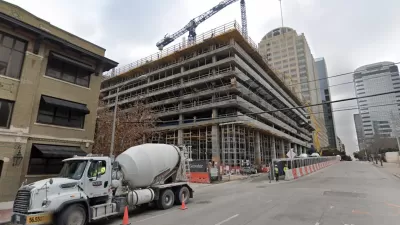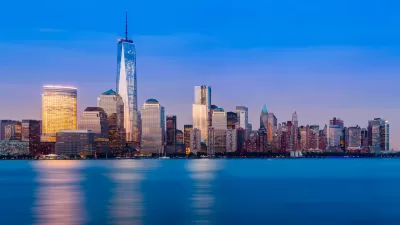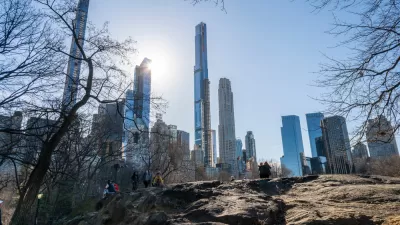Much has been made of New York's current boom in high-rise construction. A new interactive feature by the Council of Tall Buildings and Urban Habitat allows for some historic perspective on the city's penchant for building skyward.
Linda Poon shares news of a new interactive timeline from the Council of Tall Buildings and Urban Habitat (CTBUH), "which shows the rollercoaster-like progression of NYC’s skyscraper construction." The timeline also, according to Poon, "connects some of the most active and inactive years of construction with major social and political events in history."
The article concentrates especially on insights gleaned from the interative timeline into years like 1931 ("one of the most active years for building) and the 1970s. And, of course, there's perspective to be gained on the present day:
"Today, the construction of skyscrapers is once again booming, fueled largely by the rise in luxury residential construction. The clusters of blue dots—representing residential buildings—increases significantly after the 1960s. An accompanying pie chart shows that, of the 826 buildings included in the timeline, almost half are for housing."
FULL STORY: Charting the Booms and Busts of NYC's Skyscraper History

Trump Administration Could Effectively End Housing Voucher Program
Federal officials are eyeing major cuts to the Section 8 program that helps millions of low-income households pay rent.

Planetizen Federal Action Tracker
A weekly monitor of how Trump’s orders and actions are impacting planners and planning in America.

Ken Jennings Launches Transit Web Series
The Jeopardy champ wants you to ride public transit.

Crime Continues to Drop on Philly, San Francisco Transit Systems
SEPTA and BART both saw significant declines in violent crime in the first quarter of 2025.

How South LA Green Spaces Power Community Health and Hope
Green spaces like South L.A. Wetlands Park are helping South Los Angeles residents promote healthy lifestyles, build community, and advocate for improvements that reflect local needs in historically underserved neighborhoods.

Sacramento Plans ‘Quick-Build’ Road Safety Projects
The city wants to accelerate small-scale safety improvements that use low-cost equipment to make an impact at dangerous intersections.
Urban Design for Planners 1: Software Tools
This six-course series explores essential urban design concepts using open source software and equips planners with the tools they need to participate fully in the urban design process.
Planning for Universal Design
Learn the tools for implementing Universal Design in planning regulations.
Heyer Gruel & Associates PA
Ada County Highway District
Institute for Housing and Urban Development Studies (IHS)
City of Grandview
Harvard GSD Executive Education
Toledo-Lucas County Plan Commissions
Salt Lake City
NYU Wagner Graduate School of Public Service





























